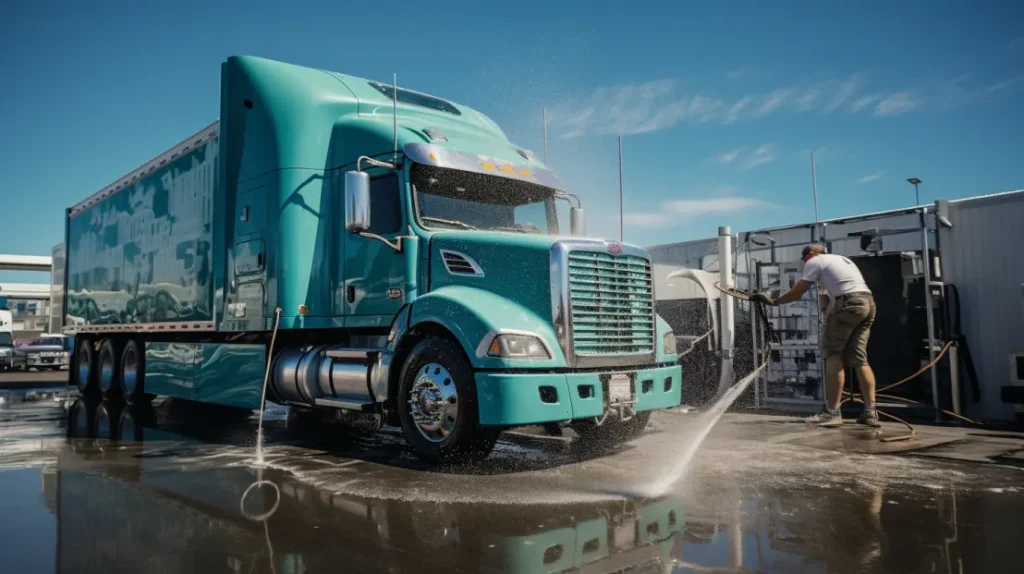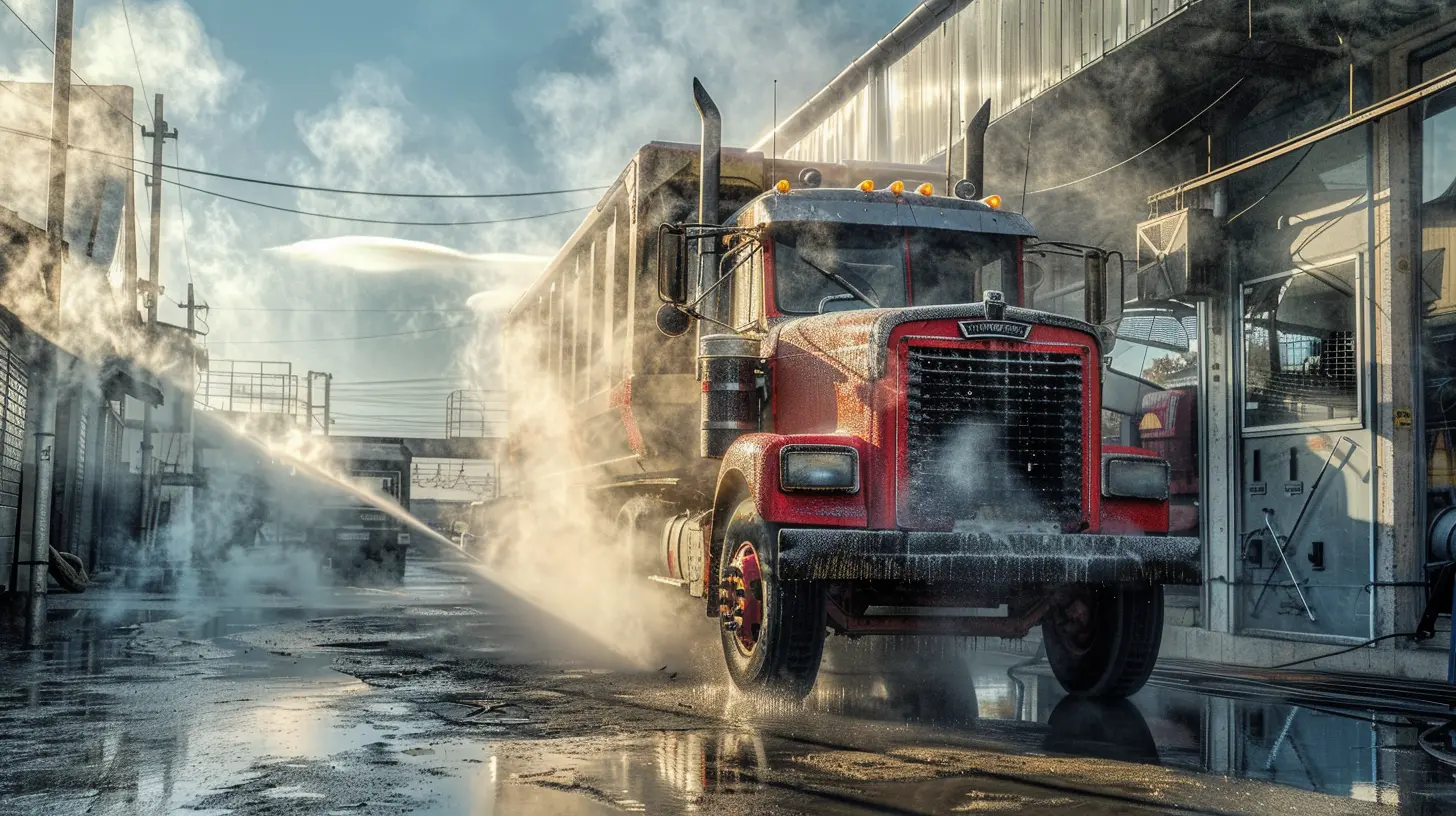Engine steam cleaning is a process where high-pressure steam around 300 degrees Fahrenheit is used to effectively break down and remove dirt, oil, and grime from your engine.
This method enhances engine performance and reduces the likelihood of premature wear by maintaining cleanliness and efficient lubrication.
Steam cleaning typically lasts between 20 to 45 minutes and involves directing steam through a nozzle for precise application. This not only improves your engine’s efficiency and longevity but also proves to be a noticeably beneficial and eco-friendly alternative to chemical methods.
Discovering more about this could greatly benefit your vehicle’s maintenance routine.
Key Takeaways
- Engine steam cleaning uses high-pressure steam to remove dirt, oil, and grime from engine components.
- The process typically involves heating water to around 300 degrees Fahrenheit to effectively break down residues.
- Steam cleaning enhances engine performance, and efficiency, and extends the lifespan by maintaining cleanliness.
- It is an eco-friendly method that avoids harsh chemicals, conserving water and minimizing pollution.
- This cleaning method is suitable for regular maintenance to prevent overheating and reduce repair costs.
1. Understanding Engine Steam Cleaning

Steam cleaning your engine can significantly enhance its performance and longevity by removing built-up dirt and grease.
When you decide to undergo this process, it’s important to understand the role of steam temperature and cleaning duration, as they directly impact the effectiveness of the cleaning.
Fact: After some time, some drivers will choose to have their engine’s steam cleaned to remove the years of built-up dirt, grease, and oil.
The ideal steam temperature for engine cleaning typically ranges between 150 to 175 degrees Fahrenheit.
At this temperature, the steam is hot enough to effectively dissolve grease and oil without causing damage to engine components. It’s important you don’t exceed this range, as too high a temperature can warp metal parts and degrade rubber seals.
The duration of the cleaning also plays a critical role. Generally, a thorough engine steam cleaning takes about 20 to 45 minutes, depending on the level of dirt accumulation and the size of the engine.
During this time, the steam must be applied consistently, covering all parts of the engine compartment to make sure no spots are missed. Shortening this duration mightn’t yield the desired cleanliness while extending it unnecessarily could lead to moisture-related issues in the engine.
2. The Importance of Engine Cleanliness

Keeping your engine clean isn’t just about aesthetics; it’s essential for maintaining its performance. When you make sure that your engine is free of grime and debris, you’re not only enhancing its efficiency but also preventing premature wear on its components.
This proactive approach supports the overall longevity of your vehicle, helping you avoid costly repairs in the future.
1. Enhances Engine Performance
Maintaining a clean engine can greatly enhance its performance and efficiency. When you steam clean your engine, you’re removing grime, dirt, and oil build-up that can hamper its function.
This deep cleaning doesn’t just make your engine look better; it also improves fuel efficiency by ensuring that your engine runs more smoothly and requires less energy to operate.
Additionally, a cleaner engine results in emission reduction, helping you contribute to a healthier environment by minimizing the release of harmful pollutants into the air.
2. Prevents Component Wear
Regular engine steam cleaning prevents excessive wear on components by removing harmful deposits. These deposits can negatively affect lubrication efficiency and heat distribution, important aspects for your engine’s best function.
When dirt and grime build-up, they create friction and resistance, which means parts can’t move as freely as they should. This not only strains the engine but also accelerates the wear and tear on moving parts.
3. Supports Vehicle Longevity
A vital engine greatly extends your vehicle’s lifespan by ensuring peak performance and reducing mechanical failures. Regular steam cleaning removes grime and debris that can lead to overheating and wear on components. This not only keeps your engine running smoothly but also plays an essential role in your cost analysis when maintaining a vehicle. A well-maintained engine boosts your car’s resale value, as potential buyers are often willing to pay more for a vehicle that’s in excellent condition.
| Benefit | Impact on Vehicle |
|---|---|
| Enhanced Performance | Reduces likelihood of breakdowns |
| Lower Maintenance Costs | Extends life of engine components |
| Higher Resale Value | Attracts better offers |
| Preventive Care | Saves money on future repairs |
3. How Steam Cleaning Works
Steam cleaning employs high-pressure steam to remove dirt and grime from your engine’s components. This method leverages the power of steam temperature and various equipment types to cleanse thoroughly without the need for harsh chemicals. Here’s a quick breakdown of how it works:
- Steam Temperature: The process uses steam at high temperatures, often around 300 degrees Fahrenheit, which effectively breaks down oil, grease, and other stubborn residues.
- Equipment Types: Different steam cleaners are available, from small, portable units to large, professional-grade machines, depending on the job’s requirements.
- Pressure and Application: High-pressure steam is directed through a nozzle, allowing precise application to target specific areas of the engine.
Firstly, you’d start by warming up your engine slightly; this makes it easier for the steam to cut through the grease. Then, using the chosen equipment, steam is applied directly to the engine parts. The high temperature of the steam helps to loosen and dissolve dirt, which is then wiped away or rinsed off, leaving your engine components clean and rejuvenated.
Discover more about this in our previous blog post: Why Do Engines Last Longer Than Car Engines?. This could greatly benefit your vehicle’s maintenance routine.
4. Benefits of Steam Cleaning Engines
You’ll find that steam cleaning your engine not only enhances its performance but also extends its lifespan. This process efficiently removes dirt, oil, and grime buildup without the harsh chemicals used in other cleaning methods. As a result, it improves the engine’s efficiency and prevents overheating, which can lead to significant wear and tear over time.
Considering the cost, steam cleaning is a smart investment. It typically costs less than repairs necessitated by neglected engines, where accumulated contaminants can cause serious damage.
Regular steam cleaning can help you avoid these costly repairs and maintain your engine’s value.
Additionally, the health advantages of opting for steam cleaning are also worth taking note of. Unlike chemical methods, steam cleaning uses natural water vapor, which doesn’t release harmful substances into the air.
This means you’re not exposed to toxic chemicals during the cleaning process, which can be beneficial for both you and the environment. By choosing steam cleaning, you contribute to a healthier workspace and a cleaner atmosphere, reducing the risk of respiratory issues and skin irritation.
In essence, steam cleaning your engine isn’t only a practical choice for maintenance but also a responsible one for both financial and health perspectives.
To ensure you’re using safe products for your health and your engines, take a look at our Detailing Chemicals.
5. Comparing Methods: Steam Vs. Chemical

Now, let’s compare the efficiency and environmental impacts of steam versus chemical cleaning methods for engines.
You’ll find that steam cleaning is often touted for its eco-friendliness, but don’t overlook the effectiveness of chemical options.
Understanding both methods helps you make the most informed decision for maintaining your engine.
1. Efficiency of Each Method
When comparing engine cleaning methods, steam cleaning often proves more efficient than chemical alternatives. Here’s why you might consider it:
- Cost Analysis: Steam cleaning usually incurs lower overall costs because it requires fewer consumables than chemical methods.
- Time Requirements: It’s generally quicker, reducing downtime as you don’t have to wait for chemicals to soak in and then be rinsed away.
- Ease of Use: Steam systems are straightforward, reducing the likelihood of incorrect application that could harm engine components.
You’ll find that choosing steam over chemicals not only saves you time and money but also spares you the hassle of dealing with the complexities and potential risks associated with harsh chemical cleaners.
2. Environmental Impact Comparison
Considering the environmental impact, steam cleaning emerges as a more eco-friendly option than chemical methods as it releases no harmful pollutants. When you use steam, you’re minimizing waste disposal issues.
Chemical methods often involve disposing of hazardous waste, which can negatively affect ecosystems. Additionally, steam cleaning uses water more efficiently. While it requires a good amount of water to generate steam, the overall consumption is less than the water used to dilute chemicals in traditional methods.
This not only conserves water but also reduces the risk of water pollution from chemical runoff. You’ll find that opting for steam cleaning not only preserves the environment but also aligns with sustainable practices.
6. When To Opt For Steam Cleaning
If your engine has accumulated grime and oil deposits, it’s time to think about steam cleaning for best performance. Steam cleaning not only restores efficiency but also extends the life of your engine components by removing harmful buildup.
When deciding on the right time for steam cleaning, consider these factors:
- Cost factors: Assess the cost-effectiveness of steam cleaning during promotions or off-peak seasons when rates may be lower. This approach can greatly reduce your expenses.
- Seasonal timing: Opt for steam cleaning as seasons change. For example, cleaning in early spring prepares your engine for increased use during warmer months, while autumn cleaning helps assess any wear after summer and gets it ready for colder weather.
Here are some indications that it’s time to opt for engine steam cleaning:
- You notice a decrease in engine performance or fuel efficiency.
- Your vehicle starts emitting more exhaust than usual.
- An upcoming thorough inspection or maintenance check is due.
7. Preparing Your Engine for Cleaning
Before steam cleaning your engine, make sure it’s cool and disconnected from the power source to prevent any accidents. Begin by removing any loose debris or dirt from the engine compartment. You’ll want to make certain that all sensitive components, such as electronic sensors and the air intake area, are properly covered to avoid water damage during the cleaning process.
Next, it’s time to apply degreasing products. Choose a degreaser that’s suitable for automotive use. Spray it generously across the engine, focusing on areas with built-up grease and oil. Let the degreaser sit for the amount of time specified on the product label; this allows it to break down the tough grime effectively.
While handling degreasing products, it’s important to wear protective equipment. Put on gloves and safety glasses to shield your skin and eyes from harsh chemicals. If you’re in a closed space, consider using a mask to avoid inhaling fumes.
After the degreaser has done its job, you can start scrubbing the tougher spots with a brush. This helps ensure you’re getting the engine as clean as possible before you proceed with the steam cleaning. Remember, a thorough prep leads to better cleaning results.
8. Choosing the Right Steam Cleaning Service
After preparing your engine and applying degreaser, you’ll need to select a reputable steam cleaning service to guarantee excellent outcomes. It’s important to take into account several factors to make sure you’re choosing the best service available. Here’s what you should bear in mind:
- Service Cost: Compare the prices of different services. Don’t just opt for the cheapest option; balance the cost with the quality of service offered.
- Provider Reputation: Research reviews and testimonials from previous customers to assess the reliability and effectiveness of the service.
- Service Scope: Make sure the service includes all necessary aspects of engine steam cleaning and doesn’t skip critical steps.
When you’re looking into service costs, don’t forget to check for hidden fees or additional charges that might apply. This transparency will help you avoid surprises when it’s time to pay.
Provider reputation is important; a well-regarded service provider will likely offer higher-quality work. Look for companies with certifications or affiliations, which often indicate a higher standard of service quality.
Lastly, make sure the service scope covers everything your engine needs. A thorough service should include a detailed assessment and cleaning of all engine components susceptible to oil and dirt accumulation.
9. Maintenance After Steam Cleaning
Once your engine has been steam cleaned, it’s important to establish a maintenance routine to keep it in peak condition. First up, you’ll need to conduct a post-cleaning inspection.
This step is vital to make sure that no components have been overlooked and that everything is intact. Check for any signs of damage or wear that could have been exposed by the cleaning process.
Next, you should focus on a lubrication check.
This involves verifying that all moving parts are well-lubricated.
After steam cleaning, it’s possible that some of the oil and grease might’ve been stripped away, leaving parts vulnerable to friction and wear. Make sure to apply lubricant where necessary, following the manufacturer’s guidelines for your specific engine model.
Additionally, keep an eye on any electrical connections and components. Steam cleaning can sometimes lead to moisture in places it shouldn’t be. Dry off any damp areas and ensure all connections are secure to prevent any electrical issues.
Regularly monitoring your engine after a steam clean will help prolong its life and maintain its performance.
Set reminders for periodic checks and adhere to these simple steps to get the most out of your freshly cleaned engine.
10. Frequently Asked Questions
1. Can Engine Steam Cleaning Damage Electronic Components?
Yes, engine steam cleaning can damage electronic components. The moisture impact increases electronic susceptibility, potentially causing shorts or failures. You’ll need to protect sensitive areas or consider alternative cleaning methods to avoid these risks.
2. Is Steam Cleaning Safe for Older or Classic Cars?
Steam cleaning can be safe for older or classic cars, but you must take into account material risks and age compatibility. Make sure it’s done carefully to avoid damaging sensitive components with excessive moisture.
3. How Long Does the Engine Cleaning Process Take?
Typically, you’ll spend about 30 minutes to 2 hours on engine cleaning. Service scheduling and cleaning efficacy can vary, so it’s best to consult your provider to maximize the process’s effectiveness.
4. Are There Eco-Friendly Steam Cleaning Options Available?
Yes, you can find eco-friendly steam cleaning options that use green detergents and focus on water conservation, minimizing environmental impact while keeping your engine clean and functioning efficiently.
5. What Are the Costs Involved in Engine Steam Cleaning?
The price you’ll pay dances with service variability and geographic pricing. Generally, engine steam cleaning costs range from $100 to $400, reflecting the level of detail and your location’s cost of living.
10. Conclusion
As a Canadian cleaning chemical manufacturer here I have explained the ins and outs of engine steam cleaning, you’re well-equipped to make an informed decision.
Remember, keeping your engine clean isn’t just about aesthetics; it’s vital for its longevity and performance. Choose steam cleaning for a more eco-friendly and effective approach, especially compared to chemical methods.
Don’t forget to prepare your engine properly and select a reputable service. Regular maintenance post-cleaning will guarantee your engine runs smoothly, almost as if it’s thanking you for the extra care!
For more insight into the regarded subject, check out our blog post How to Clean a Dirty Truck Engine.



